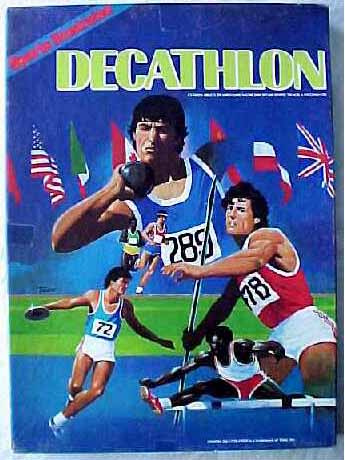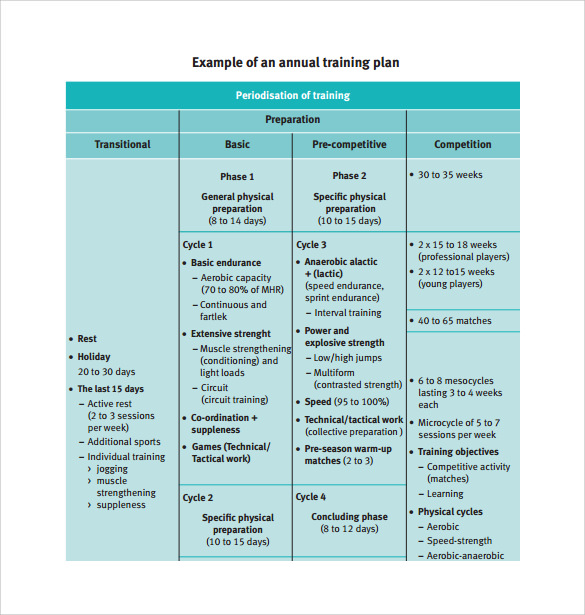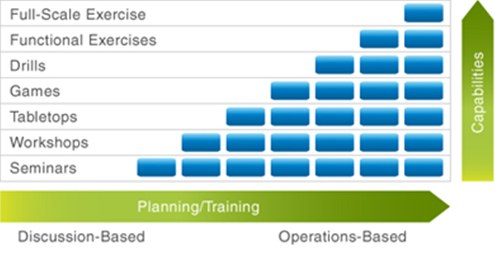The Art of Crafting Personalized Decathlon Training Programs
Customizing training plans for decathletes is an essential aspect of their athletic development and success. Decathlon, a multi-discipline event, demands a unique approach to training, considering the diverse range of skills and physical attributes required. A tailored training plan caters to an athlete’s specific strengths, weaknesses, and goals, ensuring optimal progress and performance.

Assessing Athletic Abilities: A Key Step in Customizing Decathlon Training Plans
A critical component of crafting personalized decathlon training plans is evaluating an athlete’s current abilities. This assessment includes a thorough examination of the athlete’s strength, endurance, speed, and technique to create a tailored program that addresses their unique needs and goals. By understanding an athlete’s existing skills, coaches can develop targeted training interventions to maximize their potential and improve overall performance.
Strength assessments should consider both general and event-specific strength requirements. Decathlon events demand power in various movement patterns, such as jumping, throwing, and sprinting. Incorporating exercises that target these patterns can help athletes build a strong foundation for success. Additionally, evaluating endurance capacity is crucial, as decathlon events test an athlete’s ability to maintain high levels of performance over an extended period.
Speed is another critical factor in decathlon success. Assessing an athlete’s acceleration, maximum velocity, and agility can help coaches design training programs that enhance their speed qualities. Furthermore, technique assessments should be conducted for each decathlon discipline, as proper form and execution can significantly impact performance and injury risk.
By integrating these assessments into the customization process, coaches can create decathlon training plans that systematically address each athlete’s strengths and weaknesses. This targeted approach ensures that athletes develop the necessary skills and attributes to excel in the decathlon, ultimately leading to improved performance and long-term success.
How to Structure a Decathlon Training Plan: A Weekly Breakdown
A well-structured decathlon training plan is essential for optimizing performance and ensuring long-term success. A balanced weekly plan should include a strategic distribution of events, skill development, and recovery. By organizing these components effectively, coaches can help decathletes progress systematically and minimize the risk of injury.
A typical decathlon training week should consist of a combination of track workouts, weightlifting sessions, and recovery days. The distribution of events throughout the week should be tailored to the individual athlete’s needs and goals. For example, a decathlete with a strong background in jumping events may benefit from focusing on those events early in the week, while an athlete with a strength in throwing events might prioritize those events later in the week.
Skill development is another crucial aspect of decathlon training. Coaches should allocate time for technique work and drills specific to each discipline. This can include practicing starting blocks for sprints, reviewing throwing techniques for discus and javelin, and refining hurdling form. By dedicating focused time to skill development, athletes can improve their proficiency in each event and reduce the likelihood of injuries caused by improper technique.
Recovery is equally important in a decathlon training plan. Balancing high-intensity workouts with rest days and active recovery techniques can help athletes maintain optimal performance and prevent overtraining. Coaches should consider incorporating activities such as yoga, stretching, and foam rolling into the weekly plan to promote flexibility and muscle recovery. Additionally, scheduling regular rest days can help athletes recharge mentally and physically, ensuring they are prepared for the demands of decathlon training.
In summary, a well-structured decathlon training plan should include a strategic distribution of events, skill development, and recovery throughout the week. By tailoring the plan to the individual athlete’s needs and goals, coaches can help decathletes progress systematically, minimize injury risk, and optimize performance in the long term.

Integrating Event-Specific Training: Mastering the Ten Disciplines
Event-specific training is a critical component of decathlon preparation, as it enables athletes to develop the skills and strengths required for each of the ten disciplines. By focusing on the unique demands of each event, coaches can help decathletes optimize their performance and maximize their overall decathlon score.
The decathlon consists of ten events, each with its own specific requirements and techniques. These events can be broadly categorized into running, jumping, and throwing events. Coaches should consider the unique demands of each category when designing event-specific training plans.
Running events in the decathlon include the 100m, 400m, 1500m, and 110m hurdles. These events require a combination of speed, endurance, and efficient running technique. Coaches can incorporate interval training, tempo runs, and sprint workouts into the training plan to improve an athlete’s running performance. Additionally, focusing on proper running form and technique can help reduce the risk of injuries and improve overall efficiency.
Jumping events in the decathlon include the high jump, long jump, and pole vault. These events require explosive power, flexibility, and precise technique. Coaches can incorporate plyometrics, strength training, and technique drills into the training plan to improve an athlete’s jumping performance. Focusing on proper takeoff, flight, and landing techniques can help decathletes maximize their distance and height in each jumping event.
Throwing events in the decathlon include the shot put, discus, and javelin. These events require strength, power, and coordination. Coaches can incorporate weightlifting, resistance training, and technique drills into the training plan to improve an athlete’s throwing performance. Focusing on proper grip, release, and follow-through techniques can help decathletes maximize their distance in each throwing event.
In summary, event-specific training is essential for decathlon preparation. By focusing on the unique demands of each event, coaches can help decathletes develop the skills and strengths required for optimal performance. Incorporating a combination of speed, endurance, power, flexibility, strength, and technique drills into the training plan can help decathletes master each discipline and maximize their overall decathlon score.

Prioritizing Recovery: Balancing Intensity and Rest
Recovery is a crucial, yet often overlooked, aspect of decathlon training. Balancing intense training sessions with adequate rest and recovery is essential for long-term success in the decathlon. By incorporating recovery techniques into a customized training plan, coaches can help decathletes optimize their performance, reduce the risk of injuries, and promote overall well-being.
Active recovery techniques, such as light jogging, swimming, or cycling, can help decathletes promote blood flow and speed up the recovery process. These low-intensity activities can be incorporated into the training plan on rest days or after intense training sessions to aid in muscle repair and reduce soreness. Additionally, incorporating stretching and flexibility exercises into the training plan can help decathletes maintain range of motion and prevent injury.
Rest days are also essential for decathlon training. Coaches should schedule regular rest days throughout the training plan to allow decathletes to fully recover and recharge. During rest days, decathletes should avoid strenuous activity and focus on relaxation and recovery. This can include activities such as meditation, yoga, or other relaxation techniques that can help reduce stress and promote overall well-being.
Periodization is another important concept to consider when designing a decathlon training plan. Periodization involves structuring the training plan into specific phases or cycles, with each phase focusing on different aspects of training, such as strength, endurance, or skill development. By incorporating periodization into the training plan, coaches can help decathletes avoid overtraining, reduce the risk of injuries, and promote long-term progress and success.
In summary, recovery is a critical component of decathlon training. By incorporating active recovery techniques, rest days, and periodization into the training plan, coaches can help decathletes optimize their performance, reduce the risk of injuries, and promote overall well-being. Prioritizing recovery is essential for long-term success in the decathlon and should be a key consideration when customizing training plans for decathletes.

Monitoring Progress and Adjusting the Plan: Staying on Track
Regularly monitoring an athlete’s progress and adjusting the training plan accordingly is crucial for long-term success in decathlon training. By tracking performance and setting realistic goals, coaches can help decathletes stay motivated, avoid plateaus, and make steady progress towards their development and performance objectives.
Tracking performance can be done through a variety of methods, such as tracking times, distances, or repetitions in specific events or exercises. Coaches can also use subjective measures, such as rating of perceived exertion (RPE) or visual assessments of technique and form. By regularly tracking performance, coaches can identify areas of strength and weakness, and adjust the training plan accordingly to address any imbalances or areas in need of improvement.
Setting realistic goals is also an important aspect of monitoring progress and adjusting the training plan. Goals should be specific, measurable, achievable, relevant, and time-bound (SMART) to help decathletes stay motivated and focused. For example, a SMART goal for a decathlete might be to improve their 100-meter dash time by 0.2 seconds within the next 8 weeks. By setting specific and achievable goals, coaches can help decathletes stay motivated and focused, and provide a clear roadmap for progress and success.
In addition to tracking performance and setting goals, coaches should also regularly review and adjust the training plan to ensure it remains aligned with the decathlete’s long-term development and performance objectives. This may involve adjusting the volume, intensity, or frequency of training sessions, incorporating new exercises or techniques, or modifying the distribution of events throughout the week. By regularly reviewing and adjusting the training plan, coaches can help decathletes stay on track and make steady progress towards their goals.
In summary, regularly monitoring an athlete’s progress and adjusting the training plan accordingly is essential for long-term success in decathlon training. By tracking performance, setting realistic goals, and regularly reviewing and adjusting the training plan, coaches can help decathletes stay motivated, avoid plateaus, and make steady progress towards their development and performance objectives. Monitoring progress and adjusting the plan is an ongoing process that should be a key consideration when customizing training plans for decathletes.
Collaborating with Coaches and Athletes: Building a Supportive Team
Creating and implementing customized training plans for decathletes requires a collaborative effort between coaches, athletes, and support staff. Open communication, trust, and a shared vision for success are essential components of a successful coaching relationship. By working together, coaches and athletes can create a supportive and empowering training environment that promotes growth, development, and long-term success.
Coaches should strive to create a positive and inclusive coaching environment that encourages open communication and feedback. This may involve creating a safe space for athletes to share their thoughts, concerns, and ideas, and actively seeking out their input and perspectives. By involving athletes in the planning and decision-making process, coaches can help build a sense of ownership and investment in the training program, and foster a greater sense of motivation and commitment.
Support staff, such as sports scientists, nutritionists, and physiotherapists, can also play a critical role in customizing training plans for decathletes. By working together as a team, coaches, athletes, and support staff can create a holistic and integrated approach to training that addresses all aspects of athletic development, from physical conditioning and skill development to nutrition, recovery, and mental preparation. This can help decathletes optimize their performance, reduce the risk of injury, and achieve their long-term development and performance goals.
Collaboration and communication should also extend beyond the coaching staff and athletes to include parents, teachers, and other stakeholders. By building a supportive network of individuals who share a common goal of success, coaches and athletes can create a positive and empowering training environment that promotes growth, development, and achievement. This can help decathletes build confidence, resilience, and a strong sense of self-belief, and provide a solid foundation for long-term success in the decathlon.
In summary, collaboration and communication are essential components of customizing training plans for decathletes. By building a supportive and inclusive coaching environment, involving athletes in the planning and decision-making process, and working together as a team with support staff and other stakeholders, coaches can help decathletes optimize their performance, reduce the risk of injury, and achieve their long-term development and performance goals. Collaboration and communication are the keys to building a successful coaching relationship and achieving long-term success in the decathlon.

Long-Term Success: Developing a Multi-Year Training Strategy
Customizing training plans for decathletes involves more than just addressing their current abilities and needs. It also requires a long-term perspective that takes into account their development and performance goals over several years. A multi-year training strategy can help decathletes gradually progress, avoid plateaus, and achieve their full potential in the decathlon.
A multi-year training strategy should be based on a thorough assessment of the athlete’s current abilities, strengths, and weaknesses. This assessment should be conducted regularly, at least once a year, to track progress and adjust the strategy accordingly. The strategy should also take into account the athlete’s age, sex, and stage of development, as well as their personal goals and aspirations.
Gradual progression is a key principle of a multi-year training strategy. Decathletes should aim to improve their performance gradually over time, with incremental increases in training volume, intensity, and complexity. This approach can help prevent overtraining, injuries, and burnout, and promote long-term success. Periodization, or the systematic planning of training phases, can also help decathletes peak at the right time, such as during major competitions or championships.
A multi-year training strategy should also address the unique demands of each discipline in the decathlon. For example, some disciplines, such as the 100-meter dash and the long jump, require explosive power and speed, while others, such as the 1500-meter run and the discus throw, require endurance and technique. A customized training plan should therefore include event-specific exercises, drills, and workouts that target the specific demands of each discipline. This can help decathletes master the ten disciplines and improve their overall performance in the decathlon.
Another important aspect of a multi-year training strategy is addressing long-term development and performance goals. Decathletes should aim to improve not only their physical abilities but also their mental and emotional skills, such as focus, resilience, and confidence. A multi-year training strategy should therefore include a holistic approach that addresses all aspects of athletic development, from physical conditioning and skill development to nutrition, recovery, and mental preparation. This can help decathletes build a strong foundation for long-term success in the decathlon.
In conclusion, customizing training plans for decathletes requires a long-term perspective that takes into account their development and performance goals over several years. A multi-year training strategy can help decathletes gradually progress, avoid plateaus, and achieve their full potential in the decathlon. By addressing the unique demands of each discipline, incorporating gradual progression and periodization, and addressing long-term development and performance goals, coaches and athletes can create a comprehensive and effective training plan that promotes long-term success in the decathlon.


